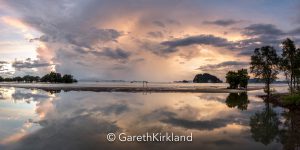
Is it Real?
In my Photo Gallery in Sarlat, one of the questions I get asked often, is ‘Have the images been worked on in Photoshop’? My answer is always Yes, though I actually use Adobe Lightroom mostly, and use Photoshop sometimes for a few specific tasks. I also explain, though it varies from image to image, my aim is to get 80 or 90% there within the camera, so that my editing is just about pulling a bit more from the image, not transforming it completely. Editing can make a great image better, it will rarely make a poor image good.
Below are shown examples of images using various filters, and the same images without filters. The difference can be remarkable, often a larger difference between an image before and after editing. Where the use of filters are not possible or practical, and the contrast in the scene is too much for a single image to deal with, I will shoot several exposures of different exposure levels, and later merge in Lightroom. The more options we have at our disposal, the greater chance we have of capturing a stunning photograph.
Edited Photos Comparison
The three images below, are are series I shot in Thailand quite recently. The first image is shot without filters. The second image is with filters. The third image is the edited version. As you can see, the biggest difference is made with the use of filters, a Lee Big Stopper to slow down the shutter speed from 1/45 seconds to 77 seconds, and a graduated filter to retain detail in the sky and brighten up the foreground. In the edited version, I have simply adjusted the contrast and suppressed the highlights. This gives a slight saturation boost, but the effect is very minimal. The smooth water, created by slowing down the shutter speed, really helps simplify the image, and focuses the eye on the trees and makes the rocks in the foreground more visible, leading the eye toward the subject matter. Filters can be used as compositional tools, as well as a contrast control.
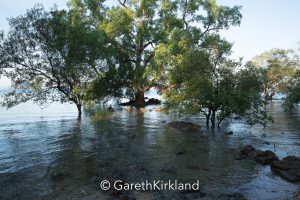
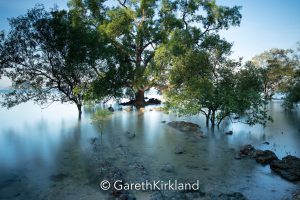
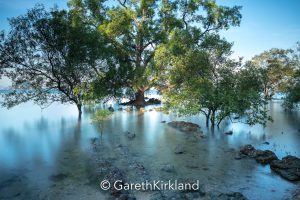
You are the Photographer, you Decide !
So before we get to actually editing an image (which I will cover fully in another post) I think it’s important to ask ‘Why?’ These questions might include ‘Why do we need to edit an image in the first place, why not just leave it alone?’ Or ‘What is our aim in editing an image, what effect do we want?’
The answers to these questions, is of course, hugely personal. There are people who consider any type of image manipulation is wrong and the image has become fake somehow. Strangely, often these people have no problem with a colour image that has been converted to Black & White, because Black & White photography is often seen as more ‘real’. It’s a strange notion I think, as the world most of us see is in colour. In any case, if you know anything about the editing process, you would know that colour images converted B&W images will have had, and need to have, way more work done to them, than an edited colour image. At the other end of the scale, you have people who think you can’t be a photographer nowadays, unless you have a Degree in Photoshop, spending one week, merging two hundred photos into layers, to create the final masterpiece! Personally, I think 99% of images benefit from some type of work after. This can be extremely quick, a matter of minutes. Some will need more work. But first I think it’s important to understand the different file formats you can use when taking a picture and the effect they will have on your image.
These two pictures shot in Amsterdam, Holland, are simply a comparison between the original image straight from the camera using graduated filters to capture detail in the sky. The second, is the same image edited. The main difference being, the edited version has more contrast and more detail in the sky. If you notice, the water area in the unedited photo, is actually more saturated. Often after achieving the correct contrast, I will desaturate the image slightly. I very rarely add saturation or vibrance.
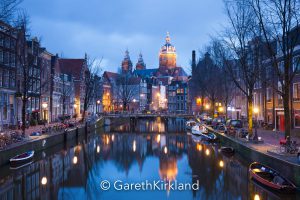
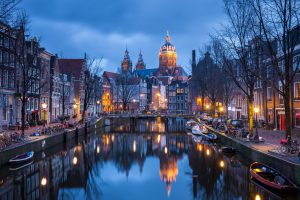
JPEG versus RAW
These two file formats are the most commonly used now, though there are others TIFF for example. Most people will be using the JPEG format, and though RAW is much more commonly used now, it is still mainly used by professionals and enthusiasts. So what’s the difference?
A JPEG photograph is a compressed file. The camera cleverly works out what information is crucial and throws away the rest, never to be seen again. The advantages for shooting in JPEG, is that the files are much smaller than RAW, making uploading and working with these images much quicker. They also will take up much less space on your hard drive and it’s a format that is recognised by all software, websites etc. The down side, is all that thrown away information. If you want to edit a JPEG and want the highest quality image at the end, the JPEG can quickly start to encounter problems if editing has to be done to an image.
The RAW image by contrast has all that information at its disposal. Nothing is thrown away. So if you did have to, for example, add exposure to an image that is too dark, and pull out a lot of information from the shadow areas, the JPEG will quickly fall apart, just because the information is not there. The RAW file, however, will be much more forgiving, allowing you have much more freedom in the editing process. Personally, I use RAW, and have done ever since I switched from film to digital. It used to be expensive though. My first IBM 1 Gig card cost me £180… for 1 Gig?? I’d get about ten images on that now with my 50 million pixel Canon 5DsR.
The other key difference between these two formats, when it comes to editing however, is that the JPEG loads onto the camera and then onto your computer pre-edited. The software with the camera will add a general boost, adding contrast, saturation, sharpness etc… so your images look pleasing from the start. The RAW file, by contrast, has nothing done to it. It’s as flat as a pancake, as it’s presupposed that some type of editing will take place. The untouched RAW file lacks contrast, saturation and is soft. So when it comes to the question, do we need to edit an image or not? That will largely depend on what file format you use. In any case the rough edit that is made in camera with a JPEG is generally a pretty haphazard affair and I much prefer for me to take control of the image and decide what needs to be done.
Creativity, Editing and Reality
In terms of our goal in editing an image, again this is a very personal choice. For me I am trying to pull out as much information from the photo, but at the same time, keep it real. Personally, I’m not a great fan of images that have lost touch with reality. In any picture I take, I want the viewer to be drawn into the image, and imagine being there. I think that connection is more difficult if doesn’t look real. I’ve seen stunning creations in Photoshop, and I admire the skill involved, it’s just not my cup of tea. Of course this could be the effect of poor editing, just whacking up the saturation slider is not the best way to go. We’ve all done it, got a bit carried away, that’s why I love the before and after view in Lightroom.
Three separate exposures, later merged in Lightroom to create the final image. Because the buildings run from top to bottom in the frame, it’s impossible to use filters, as the graduated line would be clearly visible.
Note, in the three exposures, I’m leaning toward under exposure, as the most challenging part of a shot like this is retaining the sky detail.
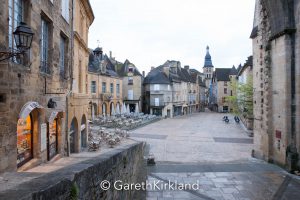
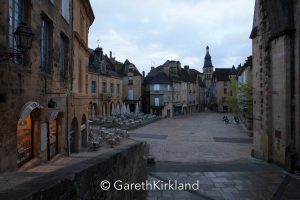
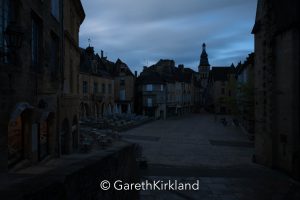
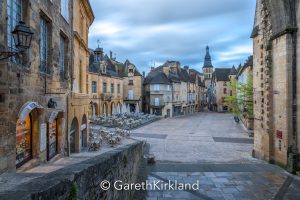
When I run my Photography Workshops, we do a full session covering the topic of photo editing, and people are amazed how simple it can be, when you understand the basics and the theory behind it. I’ll be going through the whole editing process step by step in another post, but suffice to say, I very, very rarely touch the saturation slider. Finding the correct contrast in an image (which I never do with the contrast slider, strange as it may seem) is the starting point for image editing and will have the biggest overall effect on the final result, after that, often it’s just a question of tweaking.
To visit my website for my galleries and more posts http://www.garethkirkland.com/en/
To find out more about my Photography Workshops http://www.garethkirkland.com/en/photography-workshops-france